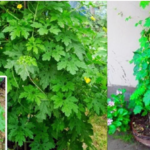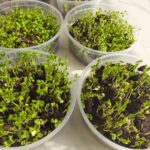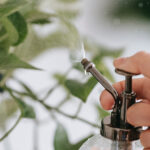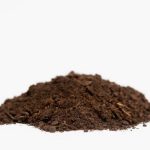Rooting hormone is a valuable tool for gardeners and horticulturists looking to propagate plants from cuttings. By promoting root development, rooting hormones increase the success rate of cuttings, making the propagation process more efficient and reliable. This article will explore the types of rooting hormones available, their benefits, and the proper techniques for using them to achieve optimal results.
Understanding Rooting Hormone
What is Rooting Hormone?
Rooting hormone is a substance that stimulates root growth in plant cuttings. It typically contains auxins, which are natural plant hormones that regulate growth and development. Auxins encourage cell elongation and division, essential processes for root formation.
Types of Rooting Hormone
There are three main forms of rooting hormone:
- Powder: This is the most common form. It is easy to use and has a long shelf life. Powdered rooting hormone is applied by dipping the cut end of the plant cutting into the powder before planting.
- Liquid: Available in both concentrated and ready-to-use formulations. Concentrated liquids need to be diluted with water according to the manufacturer’s instructions. Liquid rooting hormone is ideal for dipping cuttings or soaking them for a short period before planting.
- Gel: This form combines the ease of use of powder with the effective application of liquid. Gels adhere well to the cuttings, providing a consistent supply of hormones. They are particularly useful for difficult-to-root species.
Benefits of Using Rooting Hormone
Increased Success Rate
Rooting hormone significantly increases the likelihood of successful propagation. It ensures that more cuttings develop healthy root systems, which is particularly important for rare or valuable plants.
Faster Root Development
By stimulating root growth, rooting hormone accelerates the development process. This means that cuttings can establish themselves more quickly, leading to stronger and healthier plants in a shorter period.
Uniformity
Using rooting hormone helps produce uniform root systems among cuttings. This is beneficial for commercial growers who require consistency in plant quality and growth.
How to Use Rooting Hormone Effectively
Selecting the Right Cuttings
- Timing: Choose cuttings during the plant’s active growing season, typically in spring or early summer.
- Type of Cutting: Select healthy, non-flowering shoots. The cutting should be 4-6 inches long and have at least two sets of leaves.
- Cutting Technique: Use a sharp, sterile knife or scissors to make a clean cut just below a node (the point where a leaf attaches to the stem).
Preparing the Cuttings
- Remove Lower Leaves: Strip off the leaves from the lower half of the cutting to prevent them from rotting when planted.
- Dip in Rooting Hormone: Dip the cut end of the cutting into water first, then into the rooting hormone powder, gel, or liquid. Ensure the hormone covers the part of the stem where roots will form.
Planting the Cuttings
- Prepare the Growing Medium: Use a well-draining medium, such as a mix of perlite and peat moss or a commercial seed-starting mix.
- Plant the Cutting: Insert the treated end of the cutting into the growing medium. Firm the medium around the stem to provide support.
- Watering: Lightly water the cuttings to settle the medium around the stem. Keep the medium moist but not waterlogged.
- Environment: Place the cuttings in a warm, humid environment with indirect light. A greenhouse, a propagator, or a plastic bag over a pot can help maintain humidity.
Aftercare
- Humidity: Maintain high humidity to prevent the cuttings from drying out. Mist the cuttings regularly if necessary.
- Light: Provide bright, indirect light. Avoid direct sunlight, which can scorch the cuttings.
- Temperature: Keep the temperature between 65-75°F (18-24°C) to promote root growth.
- Monitoring: Check for root development after a few weeks by gently tugging on the cutting. If there is resistance, roots have started to form.
Common Mistakes to Avoid
Overuse of Rooting Hormone
Using too much rooting hormone can harm the cuttings rather than help them. Always follow the manufacturer’s instructions regarding the amount to use.
Poor Sanitation
Contaminated tools or growing mediums can introduce diseases to the cuttings. Ensure all tools are sterilized, and use fresh, sterile growing mediums.
Inappropriate Conditions
Cuttings need specific conditions to root successfully. Ensure they are kept in the right environment, with adequate humidity, light, and temperature.
Conclusion
Rooting hormone is a powerful ally for anyone looking to propagate plants from cuttings. By selecting the right type of hormone, preparing the cuttings properly, and providing optimal growing conditions, you can significantly improve your chances of success. Whether you are a home gardener or a professional grower, understanding and utilizing rooting hormones can help you cultivate healthy, vibrant plants with greater efficiency.





















